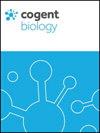Indigenous Myanmar medicinal plants and comparison of their in vitro antioxidant, antiglycation, and antimicrobial activities
引用次数: 2
Abstract
Abstract Objective: The purpose of this study was to evaluate the potential biological activities of 23 ethanolic extracts from 19 traditional medicinal plants from Myanmar. Methods: Antioxidant activity was determined using DPPH, nitric oxide and superoxide free radical scavenging assays. Antiglycation activity was studied with non-enzymatic protein glycation assay. Total phenolic content was measured compared with the gallic acid standard curve. The antimicrobial activity was evaluated against six clinically important bacteria by agar well-diffusion method. Results: Among the studied plant extracts, AGE228 (Syzygium cumini (L.) Skeels. seed) was the promising medicinal plant for oxidative stress-related disease as it showed high antioxidant activities with the percent inhibition of 75.80 ± 1.02 and 98.45 ± 1.12 for DPPH and NO radical scavenging assays. The extract AGE223 ( Tamarindus indica Linn. bark) also showed the high antioxidant activity for SO radical scavenging assay with the percent inhibition of 89.35 ± 5.72. These two extracts contained the highest phenolic content with 233.85 ± 0.04 and 214.47 ± 0.01 mgGAE/g of extract, respectively. AGE221 (Terminalia chebula Retz. branch) was the best AGE inhibitor with the percent inhibition of 79.06 ± 1.90. Most of the selected extracts showed antimicrobial activity. Among them, the antimicrobial activity of AGE232 (Phyllanthus distichus Muell. fruit) was comparable to the standard antibiotic, Chloramphenicol. Conclusion: The results confirmed that the ethanolic extracts of traditionally used medicinal plants could be effective not only for decreasing the oxidative stress and glycation end-products formation in glycation related diseases but also for treating the infectious diseases.缅甸本土药用植物及其体外抗氧化、抗糖化和抗菌活性的比较
摘要目的:研究缅甸19种传统药用植物23种乙醇提取物的潜在生物活性。方法:采用DPPH、一氧化氮和超氧自由基清除法测定抗氧化活性。用非酶蛋白糖化试验研究抗糖化活性。用没食子酸标准曲线测定总酚含量。采用琼脂孔扩散法对6种临床重要细菌进行抑菌活性评价。结果:在所研究的植物提取物中,AGE228 (Syzygium cumini, L.)斯基尔。对DPPH和NO自由基的清除率分别为75.80±1.02和98.45±1.12,具有较高的抗氧化活性,是治疗氧化应激相关疾病的理想药用植物。柽柳(Tamarindus indica Linn.)对SO自由基的清除率为89.35±5.72,显示出较高的抗氧化活性。这两种提取物的酚类物质含量最高,分别为233.85±0.04和214.47±0.01 mg /g。AGE221 (chebula Retz)分枝)为最佳AGE抑制剂,抑制率为79.06±1.90。所选提取物大部分具有抗菌活性。其中,叶子兰AGE232 (Phyllanthus distichus Muell;水果)与标准抗生素氯霉素相当。结论:传统药用植物乙醇提取物不仅能有效降低糖基化相关疾病的氧化应激和糖基化终产物的形成,而且具有治疗感染性疾病的作用。
本文章由计算机程序翻译,如有差异,请以英文原文为准。
求助全文
约1分钟内获得全文
求助全文

 求助内容:
求助内容: 应助结果提醒方式:
应助结果提醒方式:


